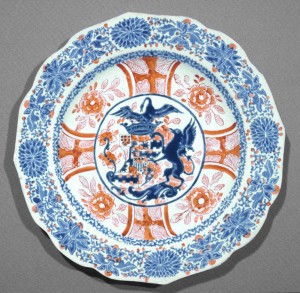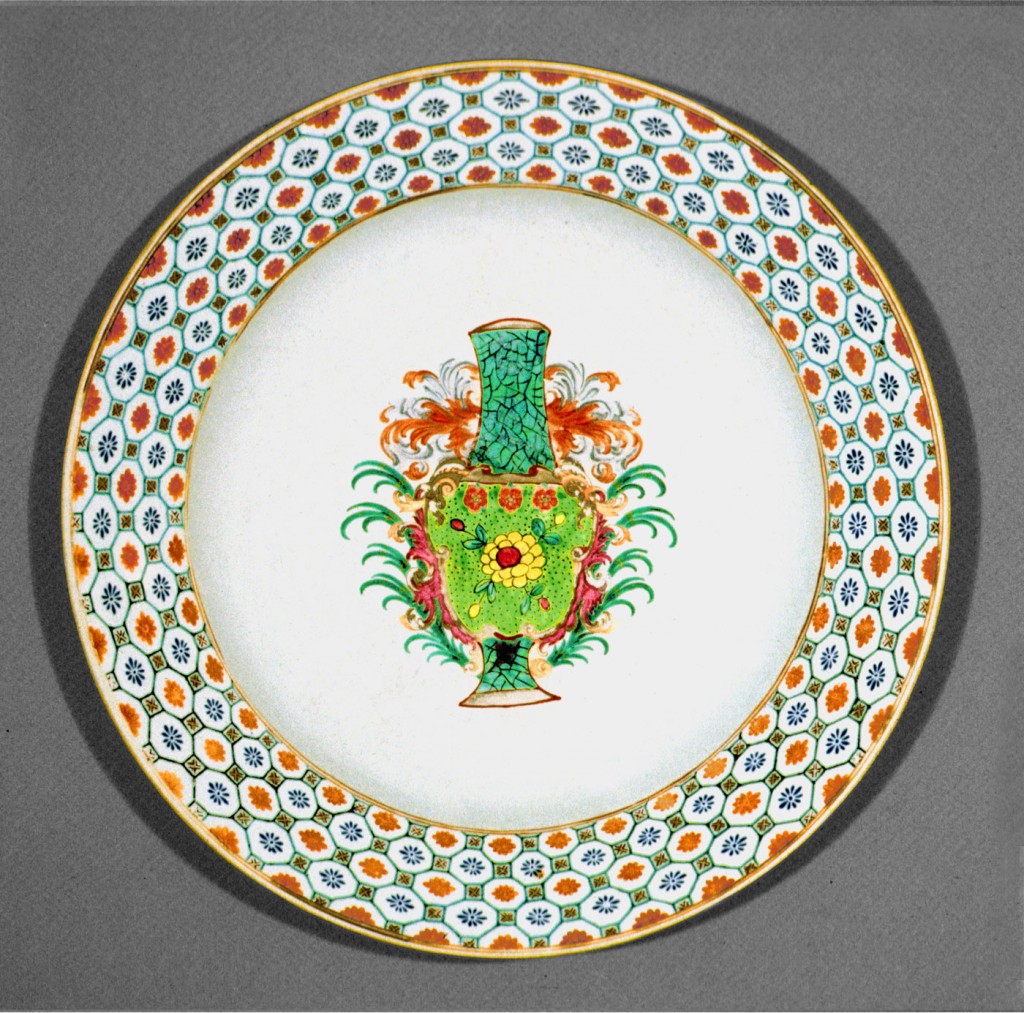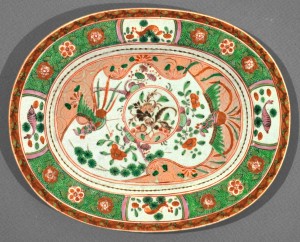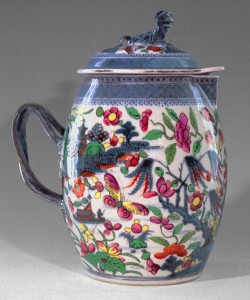Chinese Porcelain Receiving Further Decoration in the West
Some Chinese porcelain was given further decoration when it arrived in Europe. Wares enhanced with colored enamels or gilding might attract higher prices than plainer blue and white ones. Another reason for decorating might be to replicate a broken piece from an older set. Even special-order armorial porcelains were occasionally overpainted to make them appealing to a broader market. Although its origins are obscure, the term clobbering was in use from around 1900 onward to refer to redecorated ceramics.
 Plate with (obscured) arms of Van der Linden quartering Van Slingelandt, about 1745 (decoration 1745–55)
Plate with (obscured) arms of Van der Linden quartering Van Slingelandt, about 1745 (decoration 1745–55)
Iron merchant, minter, and art collector Joan Van der Linden Van Slingelandt, from Dordrecht, The Netherlands, is said to have commissioned two dinner services with the same design: the blue and white original version as well as the service that contains the plate seen here, which was enhanced with red enamels in Holland.
 Dish with (obscured) arms of Cooke with Handen in pretence, about 1750 (decoration 1750–80)
Dish with (obscured) arms of Cooke with Handen in pretence, about 1750 (decoration 1750–80)
This dish, other dinnerwares, and a candlestick from the same service show the Cooke coat of arms obscured under speckled, painted enamels. Probably applied in England, the overpainting may have been done to make an unpaid-for set more salable. Members of the Cooke family were captains of China trade ships.
Cider jug, 1790‒1810 (decoration 1790–1820)
This is one of several Chinese porcelain beverage and dinnerwares bearing English painted enamels in the same pseudo famille rose style. On this jug, the original Chinese underglaze blue land and waterscape is clearly visible. (The opposite side portrays a large Chinese pavilion.)

Dish, 1800–1820 (decoration 1820–30)
The ornament on this dish, which was possibly decorated in The Netherlands, was inspired by Japanese famille verte porcelain made from 1710 to 1725. Such designs were known to European artisans in part through costly Japanese porcelain acquired for the collection of Augustus the Strong of Saxony.

